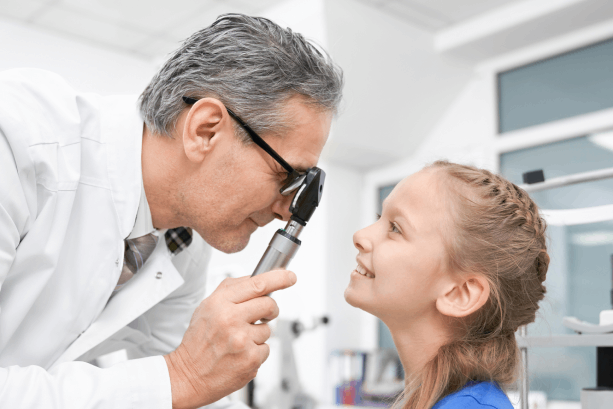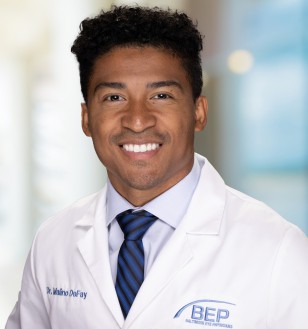Exceptional Care at Opticore Optometry: A Vision for Your Future
Exceptional Care at Opticore Optometry: A Vision for Your Future
Blog Article
The Comprehensive Eye Exam: What to Anticipate During Your Visit to the Eye Doctor
A check out to the eye medical professional for a thorough eye examination is more than a regular check-up; it is a crucial action in protecting your aesthetic health and wellness. What exactly takes place during the eye wellness evaluation, and how does it affect the prescription process?
First Assessment
The first examination throughout an eye examination functions as a vital foundation for recognizing a client's aesthetic health needs. This phase sets the tone for the whole examination procedure, enabling the eye doctor to gather necessary information concerning the patient's case history, lifestyle, and certain vision concerns. By carefully assessing any pre-existing conditions, drugs, or previous surgeries, the eye treatment specialist can customize the examination to attend to specific requirements efficiently.

Moreover, the preliminary assessment is an opportunity for individuals to voice any kind of concerns or questions, cultivating a joint relationship with their medical care company. This communication not only guarantees that the individual really feels notified and comfortable but additionally encourages them to participate actively in their eye health monitoring. Jointly, these discussions enable the eye doctor to create an individualized assessment plan, ensuring optimum care and specific medical diagnosis.
Aesthetic Acuity Test
Kicking off the core parts of an eye evaluation, the aesthetic acuity examination is developed to analyze the sharpness and clearness of a patient's vision. This essential assessment aids identify just how well a person can discern letters or signs at a standard distance, usually using a Snellen graph (Opticore Optometry). The chart consists of rows of letters that lower in size inside out, with the client placed at a customary distance of 20 feet
During the examination, the person is asked to cover one eye and read aloud the smallest line of letters they can see clearly. This procedure is duplicated for the various other eye. The results are taped as a portion, with 20/20 vision showing normal visual acuity-- where the individual can see at 20 feet what an individual with regular vision can see at that range.
The aesthetic acuity test also determines prospective refractive mistakes such as nearsightedness, hyperopia, or astigmatism, which could demand corrective lenses. By establishing a baseline of visual performance, the test is a crucial diagnostic tool that helps the eye treatment expert in establishing an ideal therapy strategy customized to the individual's special aesthetic requirements.
Eye Health And Wellness Evaluation
Complying with the visual skill test, a thorough eye wellness assessment is performed to guarantee the overall health of the eyes. This important segment of the eye examination involves a detailed examination of both the internal and outside structures of the eye.
Via the use of ophthalmoscopy or fundus digital photography, the retina, optic nerve, and blood vessels are meticulously examined. In several cases, pupil extension is performed to improve exposure of the internal eye structures, although this may result in short-lived light sensitivity for the client.
Furthermore, intraocular stress is gauged to screen for glaucoma risk. This is normally done making use of tonometry, which can spot elevated pressure levels that may recommend possible damages to the optic nerve. Jointly, these assessments form a detailed evaluation to keep ocular wellness.
Refraction and Prescription
How does one make sure optimum vision? An important action great post to read hinges on the procedure of refraction and acquiring a precise prescription. Refraction is an innovative treatment performed by eye treatment specialists to establish the precise lens power required to deal with refractive errors such as myopia, hyperopia, presbyopia, and astigmatism. The goal of this procedure is to assess just how light bends as it passes through the eye, allowing the practitioner to determine whether rehabilitative lenses are essential for boosted aesthetic skill.
During the refraction procedure, the client is asked to look via a phoropter, a gadget that contains numerous lenses. The specialist will methodically alter these lenses and ask the person to compare quality between alternatives until the ideal Opticore Optometry possible vision is attained. This procedure is important in crafting a precise prescription that defines the suitable lens power for spectacles or get in touch with lenses.
The prescription derived from this treatment not only enhances vision yet also offers as a structure for selecting appropriate corrective eyeglasses. It is crucial to guarantee that prescriptions are routinely updated, as adjustments in vision can occur in time, stressing the importance of routine eye assessments. This thorough attention to detail assists preserve clear, comfy vision in day-to-day life.
Follow-Up Recommendations

During a follow-up visit, the eye physician will perform a collection of tests to evaluate aesthetic acuity and look for any modifications in vision that could demand an upgrade to the prescription. In addition, the follow-up offers a possibility to review any type of discomfort or issues experienced with existing eyewear. Modifications can be made to make sure convenience and efficacy, whether through lens modification or framework adjustments.
For individuals with ongoing conditions such as glaucoma, diabetes-related eye problems, or macular degeneration, even more constant follow-ups might be necessary. These consultations are crucial for handling and potentially slowing down the progression of eye condition. Sticking to these recommendations can considerably add to preserving aesthetic wellness and preventing long-lasting complications.
Final Thought
The detailed eye exam is an essential procedure for keeping visual wellness, incorporating an in-depth assessment of medical background and vision issues. Key elements consist of the visual acuity test, which evaluates vision clarity, and the eye health and wellness evaluation, which examines the total problem of the eyes.
A see to the eye physician for a detailed eye examination is more than a routine examination; it is an essential action in guarding your aesthetic wellness.Kicking off the core components of an eye evaluation, the visual skill test is made to analyze the intensity and quality of a patient's vision.Following the visual skill test, a detailed eye wellness analysis is carried out to ensure the overall health of the eyes. These sees enable the eye care professional to monitor modifications in vision, update prescriptions, and examine the general wellness of the eyes. Trick components consist of the aesthetic skill test, which evaluates eyesight quality, and the eye wellness analysis, which examines the total condition of the eyes.
Report this page